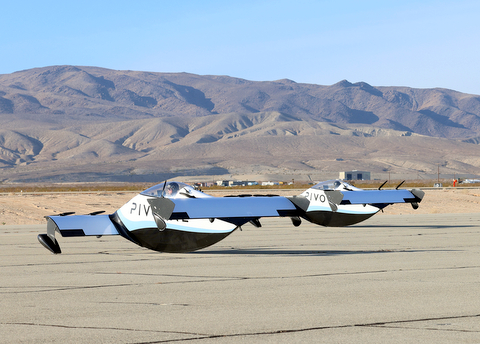A Fantasy Is Becoming Real
This article may contain affiliate links.
As we move further into the 21st century, the idea of flying cars, once confined to science fiction, is slowly becoming a viable prospect. Innovators and engineers are reimagining transportation and exploring new technologies that promise to revolutionize the way we travel.
This transformation is all about creating efficient, practical solutions to modern traffic and environmental challenges. The journey towards functional flying cars requires significant advancements in several fields, including engineering, regulations and public acceptance.
The Evolution of Personal Air Mobility
The concept of personal air mobility has grown over the decades, tracing back to early dreams of transportation in the air. In the mid-20th century, notable inventors like Henry Ford envisioned a future where personal vehicles could seamlessly transition to the skies. Still, it wasn’t until advancements in aerodynamics and materials that these concepts started taking shape.
Today, prototypes of flying cars and air taxis are emerging from various companies focusing on vertical take-off and landing (VTOL) designs. The rapid integration of electric propulsion systems has made flying vehicles more energy-efficient. As enthusiasts and experts speculate about how to innovate traditional transportation methods, they must get a better grasp of the future of flying cars and how they can make improvements in reducing traffic congestion and reshaping daily commutes. Embracing aerial mobility will likely become a substantial part of urban planning efforts.
Key Technologies Driving Development
Technology innovation underpins the advancement of flying cars, where improvements in various fields converge to enable flight. Electric propulsion technology makes flying vehicles quieter and less reliant on fossil fuels, reducing their carbon footprint. Battery technology advancements determine the range and efficiency of these vehicles and push developers to explore higher energy density solutions.
User-friendly interfaces in these vehicles are designed to guarantee that individuals, including those without piloting experience, can operate them safely. Autonomous flight technology promises to mitigate human error by enabling managed flights through air traffic control systems. Regulatory bodies are updating and refining standards to accommodate these new technologies for better safety and reliability of flying vehicles. As they integrate with current air traffic management systems, high-definition mapping and real-time data will boost their operability.
Challenges Facing Flying Car Adoption
There are numerous challenges that the flying car industry must address before mainstream acceptance becomes a reality. Regulatory hurdles pose one of the largest barriers, as existing airspace management systems require significant overhauls to integrate aerial vehicles safely. Public perception of flying cars remains cautious: safety concerns dominate discussions among potential users. Without addressing these apprehensions effectively, the adoption process risks stagnation.
Infrastructure is another critical consideration. Cities must accommodate flying vehicles, leading to concerns over what new landing zones and charging stations may look like. Working with regulatory agencies will establish guidelines for urban environments to support aerial travel safely. Pilot training for users or automated systems’ reliability will achieve a safe experience.
The Role of Regulations in Development
Regulatory frameworks will determine how flying cars fit into existing air traffic systems and urban planning. Collaborations among governments, aviation authorities, and private developers will be required so that innovations meet safety, noise standards, and are environmentally friendly. Creating safe flight corridors for flying cars and establishing regulations specific to their use will aid public acceptance.
Countries like the United States and nations in Europe are already beginning to draft policies aimed at facilitating this new kind of aviation. The Federal Aviation Administration (FAA) has initiated discussions involving air taxi operations. These changes indicate that regulators are recognizing the importance of integrating innovative vehicles into national and regional transportation frameworks.
Standards for certification and airworthiness will be required. Meeting a high bar for flying vehicle safety will dictate public trust and consumer confidence. Authorities must continuously assess technology advancements to keep guidelines relevant and effective. This fluid dynamic will shape how quickly flying cars become an integral part of our transportation ecosystem.
Investment Trends in Aerial Technology
Investments in flying car projects have been fueled by interest from venture capitalists and corporations looking to pioneer urban air mobility. Startups and traditional aviation companies are competing to develop viable prototypes, resulting in increased innovation. Major automotive manufacturers are starting to invest in aerial solutions, seeking to leverage their engineering expertise to create hybrids and drones that serve passenger needs.
The influx of capital is attracting talented engineers and thinkers from various fields. Collaborations among industry giants in automotive and air travel are becoming common, as partnerships may generate more comprehensive solutions. Research institutions are joining these discussions, promoting interdisciplinary approaches critical for tackling flying car technology challenges.
As these investments become more integrated into the mainstream, public awareness will rise. Stakeholders, including government entities, must implement policies that nurture this incubator-like environment and prioritize safety and public interest.
Infrastructure Implications for Urban Areas
For flying cars to become a reality, infrastructure changes will be necessary in urban settings. Vertiports, designated landing and take-off locations for eVTOLs, need to be integrated into city designs to support the aerial fleet. These sites must be carefully located to promote easy access and safety. Robust ground infrastructure must be established to guarantee seamless operations.
Cities are exploring pilot projects aiming to establish initial networks that link vital points within urban centers. Data from the National Academies of Sciences indicates that cities that integrate aerial transport can improve travel efficiency. Preparing urban infrastructure for the era of flying cars will require a collaborative effort among city planners, aviation authorities, and private stakeholders.
Public Perception and Acceptance
Public perception influences consumer attitudes toward new technologies and innovations. As flying cars become more commonplace in discussions, efforts to educate the public will be critical. Showing actual demonstrations of safety and functionality will build credibility and confidence in these new systems.
To promote a favorable attitude, companies must engage in community outreach and transparency throughout the process. Highlighting environmental and traffic relief benefits can shape positive narratives about flying vehicles. Initiatives that emphasize their potential to alleviate road congestion will resonate in urban settings, where such solutions are most needed.
An informed public is more likely to embrace concepts that initially feel foreign. The journey toward making flying cars commonplace involves strategic partnerships, innovations in technology, and overcoming significant challenges. With sustained collaboration among stakeholders, the dream of personal air vehicles may soon be tangible, marking a new era in global transportation.
The post The Development Path of Flying Cars first appeared on Clean Fleet Report.







